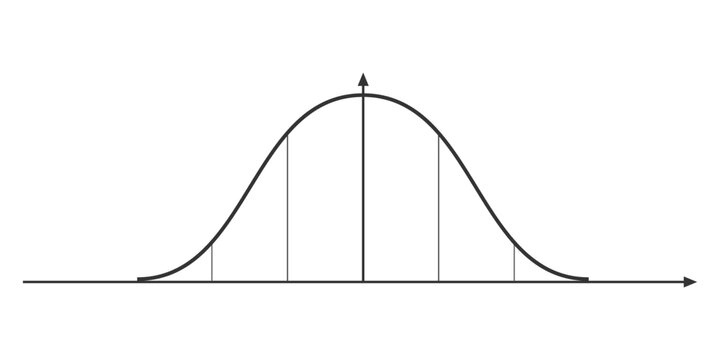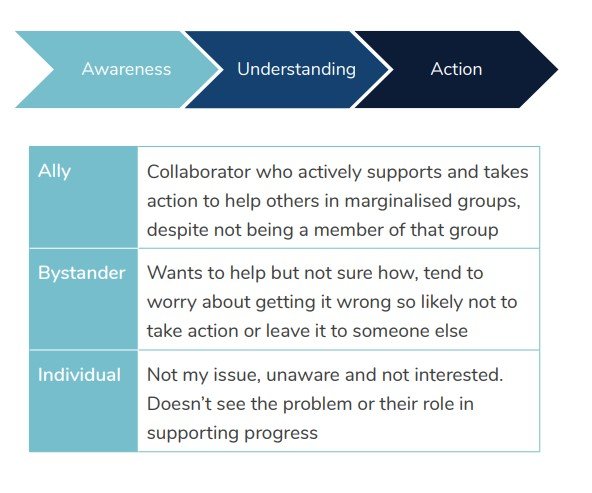This year I turn 40, always a time for reflection. The last milestone when I turned 30 looked very different and so much has happened in the last decade. Including writing 6 books, coming out, starting my own business and becoming an international author and speaker and getting married.
Just eight years ago I’d just left my corporate career and Senior HR role at the biggest company in NZ and decided to do something different. I was writing my first book but beyond that no idea how it would turn out. As I wrote I embarked on a year out to discover my passions and try and find a new career that aligned with my values – and a new life really having just walked away from a seven year relationship too as part of a process that resulted in me coming out.
This journey took me to places like Bali, the Kingdom of Bhutan, teaching English to novice monks in Northern Thailand, silent meditation retreats, debuting in public speaking, starting my own business. The result, 6 books published and in stores across NZ, a speaking bureau representation, plus hundreds of happy clients for whom my work has made a difference. It’s been a long journey to this point so I thought I’d share some of the reflections.
6 THINGS I LEARNED ABOUT BUSINESS
Just because you’ve never done it doesn’t mean you can’t do it
When I left my job I had no idea what else I could do. I’d trained all my life for one career which was no longer fulfilling. I didn’t know what else I wanted to do or if I’d be capable of anything else, I certainly wasn’t qualified.
When it came to running my own business I didn’t know where to start. There’s been a lot of learning over the last few years, trial and error and a lot of failing too! I’ve learned to do things like accounts, marketing, social media and more that I’d never had to consider in my former career.
It’s also pushed me out of my comfort zone in other ways – networking, building a reputation and a brand as well as being the face of my business (having been someone who prefers to be in the background!)
I used to think – I’ve never done this before it’s not in my skill–set, I’ve no experience in this but I’ve learned over the years that just because we’ve not done it doesn’t mean we can’t, it’s just something we haven’t learned to do yet.
It’s so important that whatever we’re doing we make sure we always learn new things, push ourselves and take on challenges so that we learn and grow. It also leads me nicely onto my next lesson
Don’t expect it to be easy
God it definitely wasn’t, it’s taken 7 years to get to this point. Probably 3 until I could earn a liveable income and a lot of pressure and uncertainty along the way. For all the dreams you see when people stand at the summit of their career or otherwise there’s always been a mountain to climb to get there.
Get out of your comfort zone - don’t play it too safe
I avoided risks because I didn’t want to fail but taking on my own business, re-inventing my career meant I could no longer avoid this. I had to take risks and I became familiar with failure as I battled through the trial and error of learning so many new things.
I faced many fears as I embarked on this journey; leaving the certainty of what I knew, a career I trained 15 years for and knew well, a regular pay check and company car, an image people had of me – what would they think now? What if I failed? What if I’m making the wrong choice?
I had no choice but to get out of my comfort zone but sometimes it seemed tempting to stay there –better the devil you know! As I stepped out of my comfort zone I faced the fears, uncertainty and risk and at times I also failed.
I put on events that no-one showed up to. For the first couple of years I earned no money from my business. Most of my speaking was for free and my first royalty cheque was worth less than $5.
After each rejection letter from a publisher I could have decided to give up. In fact there’s been many times business got hard, I was out of my depth, I wasn’t earning money and it felt like I’d failed, reached the end of the line, I was tempted to give it up.
One of the things that always kept me going was asking “What has this taught me and what can I do about it?” This solutions focused reflection forced me into action, rather than wallowing in the fact it was hard and I’d failed it immediately turned my mind towards – what am I going to do about it and scanning the options I had.
Failure is how we learn and grow and is often how we learn to succeed, it’s also something that’s unavoidable if you push yourself, take risks and face challenges, I now see how it can be a positive. But we can see failure as a sign of our lack, a mirror of our self-worth and it encourages us to devalue what we’re capable of.
Don’t under estimate yourself – you’ve earned your place
We often doubt our abilities, underestimate ourselves or think that our success must have been down to something other than our ability – luck, a mistake, being liked etc.
Throughout my career I would wave away success and down play my achievements almost embarrassed by praise. I can’t say I’m there yet but I have since learned to respond to praise and recognition with ‘thank you’ which is a good start!
Other people’s opinions seem to carry more weight than our own and it’s only the feedback I’ve had from others over the years that now allows me to believe I can do this and that people love what I do.
I remember worrying in my first workshop I’d been asked to do for a big business – am I qualified to do this? Will they enjoy it? Will it be good enough? Who am I to be posing as an expert in this field? – all those questions played on my mind despite having written a book on the subject I was speaking about!
If you’re getting praise you’ve earned it. The success you achieve is because you’re capable and have worked for it. It doesn’t have to be perfect to be success and you also don’t need to have all the answers.
You don’t have to have all the answers
Often we feel we need all the answers, to see the whole stair case before we take the first step and begin. There was trial and error, trying things to know if that worked or not. Training to teach yoga to see if this could be the future me or where else that might take me. Whilst I had a plan, I had no idea where I’d end up and it was only as I made progress the next steps began to emerge.
Sometimes we have to be comfortable with uncertainty because we don’t know what’s next. We might have a path set out but end up somewhere different, or sometimes we end up in the same place but take a different path or route to the one we planned, either way it works. I’m of the opinion now that there are no wrong paths and there are lessons learned and experiences gained even from the tough paths I wish I’d not chosen – I wouldn’t go back and change it.
Choose your people wisely
I’m lucky to have had support around me, cheerleaders, people who believe in me. Support from my family even though they had no idea what I was doing and feared my exit from a corporate well paid job to clean composting toilets in a yoga ashram may not be a great career move!
It’s taught me the value of those who surround us. The people I’ve learned from and aspired to be who inspired me to carry on, even when it got hard. But equally those who’ve challenged me to grow and pushed me.
I used to feel jealous when I looked at those who’d succeeded, like they’d done it right and I was doing it wrong; “why can’t I be on the stage at this event rather than in the audience?” It made me feel like I wasn’t as capable rather than just on an earlier stage of my journey. It’s important we respect these people, learn from them but never compare to them or feel their success threatens our own learning.
A massive part of my growth has been personal growth and I think these middle parts of our lives are an ideal time for us finding our feet, worrying less about what others think and becoming comfortable in our own skin. Much of this and the calm I experience within I owe to my time with Buddhist monks and nuns. Which brings us to the second part of these lessons:
6 THINGS I LEARNED ABOUT MYSELF
There’s so much we can learn from ancient traditions that translates into our modern lives and these lessons have been the cornerstone of me living a healthy, happy life. Here’s the best bits of what I learned.
Equanimity – A calm mind. One of my biggest aha moments came when I learned how important our minds are and how we can train them. I’d spent many years on diets, gym classes and pursuing physical health goals but I’d never considered to do the same for my mind. Yet it’s so important. Everything starts in the mind. What we think becomes how we feel and that becomes how we act. If we have an unpeaceful mind we will have an unpeaceful life it’s that simple. You know when you get out of bed on the wrong side and everything and everyone irritates you – that’s the mind doing that! If our minds are busy, stressed and tired of course life is going to be harder. Stilling the mind has been without doubt the biggest change in my life.
In a world when I was encouraged to multitask, the busier I was the more successful I’d become and sleep was for the weak this is a full 360 in terms of my beliefs! I used to think that down time was a waste of time and pressed myself to be doing something ’productive’ with every second of the day. I now know that being productive also means resting, stilling the mind and taking a break. Pressing pause in our busy days is as important as anything else on our to do list because it makes us more effective, it’s critical in helping us to everything else that’s on that to do list.
Sitting still for 10 minutes a day focusing on my breathing is my number one wellness tool. It calms my mind, helps me think more clearly, makes me more productive and creative and I’ve become so much more self-aware. It helps open up space between my thoughts, feelings and reactions. Do I still have a busy brain, god yes. Do I still have negative thoughts – of course I’m human. The difference is that now I notice them and have small pauses to choose to respond rather than react. My meditation practice helps me calm these thoughts and allow them to pass through rather than becoming attached or carried away by them.
This training of my mind has also allowed me to gain so much Perspective – I’ve learned that its not what happens to us but how we react to it and that we have a choice. This has been instrumental in changing the way I react to challenges. So much of what happens we can’t control and this can leave us feeling helpless like victims. When we focus on what we can control we become empowered and this is where we get to choose.
This segways nicely to another important lesson Impermanence. Everything will come and go whether we like it or not. None of us will live forever, everything we have we can lose. It’s why acceptance is so important, accepting the things we can’t change.
We chase after the highs in our life (the perfect job, house, partner) and then when we get it we cling on to it and hope it never leaves. Likewise when we feel sad we desperately want it to pass and to feel happy again. Whoever we are there will be a mixture of good and bad in our life. We all have challenges, the good news is they don’t last. These feelings we want to avoid don’t last – but nor do the good ones. Everything comes and goes, this is the nature of life.
In the words of the Dalai Lama “if we have a problem there’s always two options either 1) there’s a solution in which case great, there’s no need to worry about it. Or 2) there’s not a solution, in which case there’s no point worrying about it.”
This valuable lesson taught me that suffering is inevitable, misery is not. If we can accept the things we can’t change it allows us to make peace and move on. Good and bad will always come and go, sit with what is and accept what we can’t change.
We don’t like to suffer, but it can also be where our biggest lessons come from. During my time at plum village Thích Nhất Hạnh’s place in France I read his famous book ‘No mud no lotus’ In fact I now have a lotus tattooed on my foot as a result of this very important lesson. The lotus is a beautiful flower that grows from the mud. We too grow from our challenges to bloom into the beautiful humans we are. It’s because of the mud that we become a lotus and without the mud we wouldn’t bloom. Suffering is part of the human condition and it’s ok not to be ok. If we get sick or lose someone we love of course we’ll suffer but sitting in the mud is often how we get through those times and over time the lotus starts to bloom. So often it’s our deepest scars that can lead to our biggest gifts.























